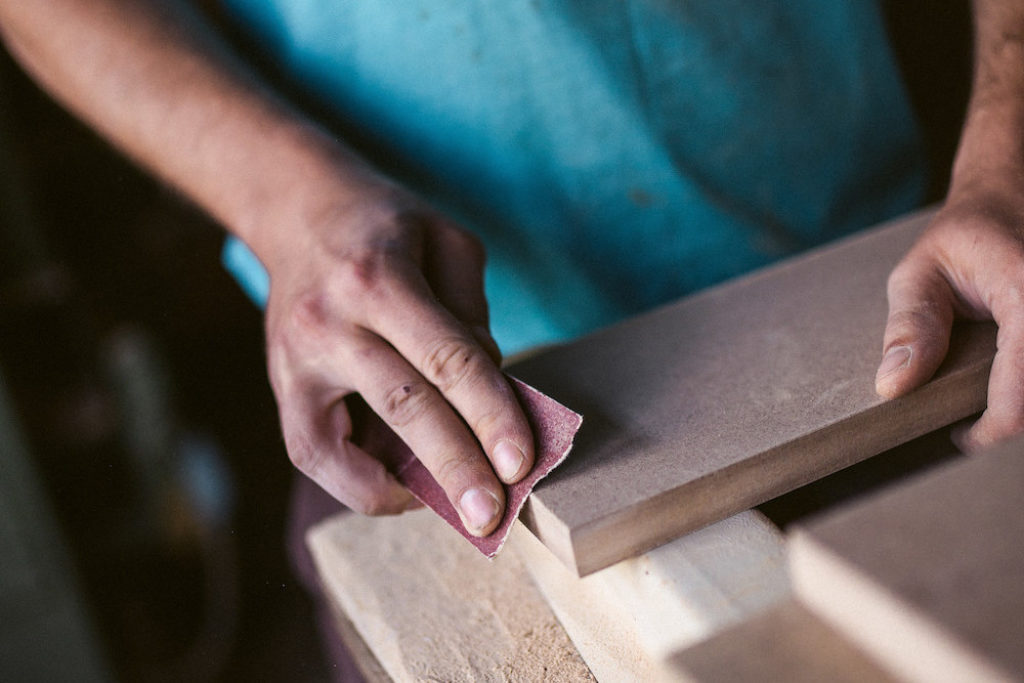
[Image above] Even if a surface feels smooth to the touch, it can still be quite rough on the microscale. So, what causes this roughness? Credit: Ivan Radic, Flickr (CC BY 2.0)
Growing up, I was very active in 4-H, just like many other kids in my Iowa hometown. But instead of showing animals like many of my farm-based friends, I focused on doing home economics or shop projects for the Exhibits Buildings at the annual county fair.
Each year I did at least one Exhibits project in an area I’d never done before. And one year I was fortunate that a neighbor agreed to teach me woodworking.
In the process of making my small rocking horse, I came to appreciate the transformation wood goes through in production, from a rough, splinter-filled block to a smooth, rich-colored slab, following hours of cutting, sandpapering, and staining the wood.
When I ran my hands over the finished horse, I was impressed by how smooth the wood felt. However, I knew that smoothness was in some ways an illusion.
I had sanded the wood multiple times using finer sandpaper grits each time, to the point that it felt smooth to the touch. But if I were to look at the wood under a microscope, I likely would see the surface was still quite rough.
The same can be said for metals and even glasses—things that appear smooth to the naked eye can look like rugged terrains when viewed through a microscope. But what causes this roughness? The truth is, we still don’t know for sure—there currently is no uniform theory about the origin of roughness.
Roughness plays a big role in determining friction and adhesion between materials, which in turn determines how well a material flows. And understanding how materials flow is a big help in lots of different fields, from designing better performing cements to predicting natural disasters such as earthquakes and landslides. So if we want to better control flow, we need to better understand roughness.
In a recent study led by researchers from the University of Freiburg, they look to understand one aspect of roughness—its self-affinity.
Self-affinity describes a fractal whose pieces are scaled by different amounts depending on the axis. When people think of fractals, they tend to imagine self-similar fractals, such as the Sierpinski triangle (below left), in which all parts of the fractal were scaled the same in all directions. In self-affine fractals, such as the castle-like fractal (below right), pieces are scaled differently based on the direction, in this case by 1/3 in the x-direction and by 1/2 in the y-direction.


In the paper, the researchers note that rough surfaces are often self-affine fractals, something that has been observed from the atomic to the tectonic scale. This observation is interesting because it means rough surfaces have patterns in their bumpy contours—it is not just random jagged ups and downs in the surface.
There currently is no unifying explanation for the origins of this self-affinity. But “[the] fact that scale-invariant roughness is observed from microscopic to geological scales hints that a common mechanism is active across vastly different length scales,” the researchers write.
For their study, the researchers investigated self-affinity by looking at roughness on a small scale. Macroscale surface changes, “whether natural or engineered, involve mechanical deformation at the smallest scales,” so understanding small-scale roughness will shed light on macroscale roughness.
The researchers used molecular dynamics calculations to simulate simple biaxial compression for three benchmark material systems: single-crystal gold, the model high-entropy alloy Ni36.67Co30Fe16.67Ti16.67, and amorphous Cu50Zr50.
“Each material represents a unique limit of structural order: a homogeneous crystal, a crystal with stoichiometric disorder, and a glass with no long-range order,” they explain. “They are known to exhibit a different micromechanical or molecular mechanism of deformation … [but] despite their differences in structure and material properties, all three systems develop rough surfaces with a self-affine surface topography when compressed.”
Based on their results, the researchers conclude that the emergence of self-affine roughness at small scales is not due to a specific deformation mechanism. Instead, it is likely due to the type of deformation taking place.
“[The] statistical nature of plasticity appears to be the principal reason that surfaces develop self-affine roughness during deformation,” they write. That is, plastic flow deformation occurs through intermittent strain bursts. When the researchers carried out continuum mechanical calculations on systems that deformed via smooth laminar flow, self-affinity did not emerge.
In the conclusion, the researchers speculate that similar results may hold for deformation processes occurring at much larger scales, as long as deformation occurs in a discrete manner rather than as a smooth, continuous flow.
“Our results pave the way for a thorough understanding and control of surface roughness created in a variety of processes, such as machining or wear,” they conclude.
The paper, published in Science Advances, is “The emergence of small-scale self-affine surface roughness from deformation” (DOI: 10.1126/sciadv.aax0847).
